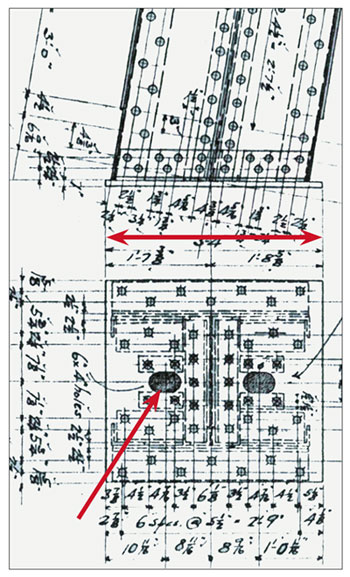
This Article From Issue
September-October 2005
Volume 93, Number 5
Page 390
DOI: 10.1511/2005.55.390
To the Editors:
The interesting article, "The Collapse of the Kinzua Viaduct" by Thomas Leech (July-August), shows in Figure 7 the roller bearings referred to in the text as providing a means to relieve thermal stresses within the towers. Although Leech notes that these metal roller bearing assemblies corroded and never served their intended function, it would appear that any lateral motion they would have permitted would also have put shear stresses on the bolts that ultimately failed. Therefore, from looking at the artist's drawing, not actual engineering drawings, it seems that this feature of the bridge design was flawed from the outset, and perhaps was a major factor in the eventual collapse.
Leslie E. Matson
Roseburg, Oregon
Mr. Leech responds:
The artist's sketch was intended to highlight the location of the fractured collar coupling assembly and resulting separation failure within the anchor bolt system, perhaps at the expense of other important features of the original design. The 1901 engineering drawing, shown below, indicates holes elongated in the direction of intended lateral movement, to permit the structure to literally move back and forth in the lateral direction while the anchor bolts remain stationary.

It is interesting to note that while the original design permitted lateral expansion, it did not permit longitudinal expansion, which potentially was much greater based on the locations of the various wind locks within the structure. This restriction likely directly contributed to the fatigue fracture of the collar coupling assemblies.

American Scientist Comments and Discussion
To discuss our articles or comment on them, please share them and tag American Scientist on social media platforms. Here are links to our profiles on Twitter, Facebook, and LinkedIn.
If we re-share your post, we will moderate comments/discussion following our comments policy.